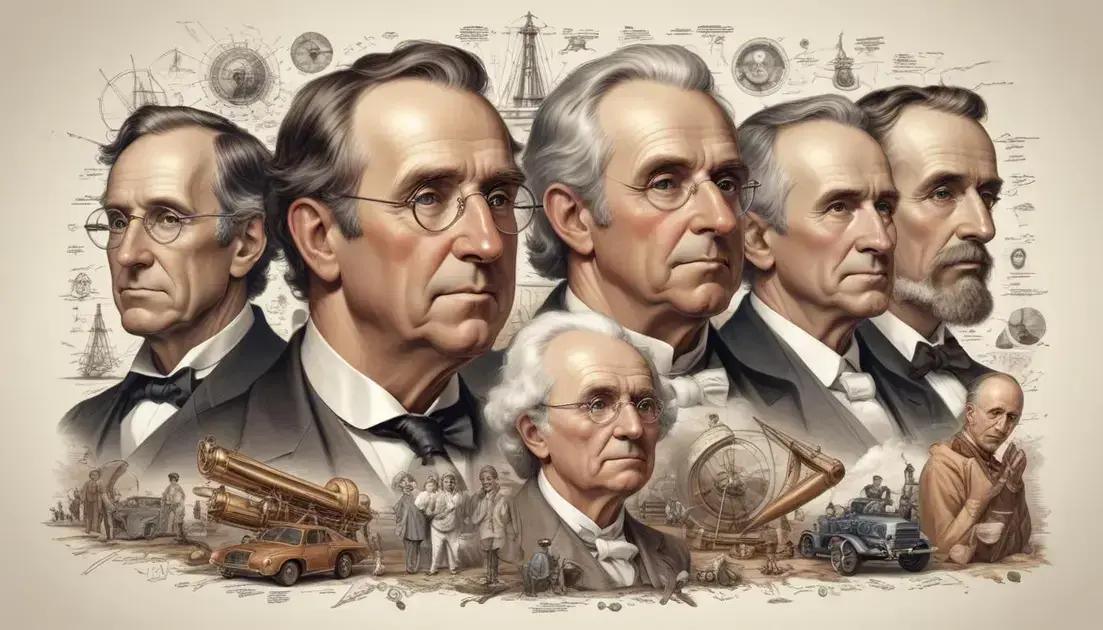
The First Word Sent Over the Internet Was “LO”
The legacy of ARPANET revolutionized communication and paved the way for the modern internet. This early network introduced key technologies like packet switching, allowing information to travel quickly and reliably. ARPANET connected researchers and universities, inspiring innovations that led to email, the World Wide Web, and social media. Understanding ARPANET’s impact helps us appreciate today’s digital connections and the continuous evolution of communication technologies.
Internet history took its first step on October 29, 1969, when a student at UCLA typed “LOGIN” to send to Stanford, but only “LO” made it through! Curious about how this simple start led to today’s vast network?
The Birth of the Internet
The Birth of the Internet marks a revolutionary moment in history. On October 29, 1969, a small team at UCLA began this incredible journey. They sent the first ever message over ARPANET to Stanford.
This message was supposed to be “LOGIN,” but it only made it halfway. The system crashed after just two letters: “LO.” It sounds funny now, but it was a huge breakthrough at the time.
ARPANET connected four different computers. This laid the foundation for what we now call the internet. It allowed researchers to communicate and share information in new ways.
At the time, people couldn’t imagine how this simple connection would change the world. From emails to social media, all kinds of communication evolved from this tiny start.
Over the years, more networks joined together. They formed a web of connections, which eventually became the internet as we know it. It opened doors for countless innovations and industries.
The Birth of the Internet is about more than just tech. It’s about people coming together to share ideas. It sparked creativity and collaboration that we still see today.
Understanding its origins helps us appreciate the amazing technology we have now. It reminds us of the bright minds that started it all and the impact that a simple “LO” had on the future.
Significance of the First Message
Significance of the First Message lies in its role as a milestone in digital communication. When they sent the first message, it marked the start of a whole new era. The word “LO” was not just a simple error; it was a breakthrough.
This tiny message showed the potential of computers to connect people. Suddenly, information could travel across distances in mere seconds. Imagine the excitement of that moment! Researchers could talk and share ideas like never before.
The significance of that first message goes beyond technology. It started to shape our world. By proving that communication was possible, it inspired further development. Many thought about how to improve this early network.
As time went on, the basic idea expanded. Each new development built on that first attempt. From simple messages, we moved to emails, video calls, and social media. The world became more connected.
This small step has had a huge impact on our lives today. Without the first message, we might not have the open communication that we enjoy now. It shows how one simple action can create waves of change.
Understanding the significance of this first message helps us appreciate the internet today. It reminds us of our ability to share information and connect with each other in meaningful ways.
Early Technology Behind ARPANET
Early Technology Behind ARPANET was groundbreaking for its time. ARPANET used packet-switching techniques to send data across networks. This method broke data into small packets for faster transmission.
Each packet traveled independently through various routes. This was different from traditional methods, where a single path was used. If one path failed, the entire message would be lost. With packet-switching, messages could still get through.
The hardware involved was also innovative. Early computers were large and required special environments to operate. But ARPANET connected multiple computers, allowing them to communicate easily.
Very few people had access to such technology. Researchers and universities were the main users at first. They explored how to optimize this new way of sharing information.
This early technology paved the way for the internet we know today. Understanding how ARPANET worked helps us see how far we’ve come. It was the first step toward creating a global network, connecting millions of users worldwide.
The basic principles of ARPANET still influence modern internet technologies today. We owe many of our innovations to the pioneers who developed this early system.
How Communication Evolved
How Communication Evolved is an interesting journey through time. Starting with ARPANET, the first message showed the world what was possible. Over the years, communication technology progressed rapidly.
After that first transmission, people began to imagine more. They wanted to share not just text but images and sounds too. This sparked the development of email in the 1970s. Email quickly became popular and transformed how we connected.
In the 1980s, the rise of the World Wide Web changed everything. Suddenly, anyone could access information easily. Websites became places to share ideas, products, and more. This opened the door to social media.
By the 2000s, platforms like Facebook and Twitter began to shape how we interact. They made it easy to keep in touch with friends and family. Sharing thoughts, photos, and videos became part of daily life.
Today, communication is instant and global. We can connect with someone on the other side of the world in seconds. Video calls and messaging apps have made it even easier to stay in touch.
Understanding how communication evolved helps us appreciate today’s technology. The journey from a simple “LO” to instant messaging shows how much we’ve grown.
Legacy of ARPANET
Legacy of ARPANET is a crucial part of internet history. It set the stage for everything we have today. When ARPANET launched, it connected universities and researchers, changing communication forever.
This early network introduced concepts we still use, like packet switching. Packet switching allows data to be split into packets, making it faster to send. This idea is the backbone of how the internet operates now.
The success of ARPANET inspired the creation of many more networks. These networks eventually joined together to form the modern internet. Without ARPANET, we might not have the global communication we enjoy today.
Many of the early pioneers in networking came from ARPANET. They developed technologies that improved and expanded internet capabilities. Their contributions shaped how we connect with each other now.
ARPANET also paved the way for other innovations. Email, the World Wide Web, and social media all grew from ideas sparked by ARPANET. It truly set a path for the digital age.
Today, ARPANET’s legacy lives on in countless ways. It reminds us that even a small project can lead to extraordinary changes.
Conclusion
In conclusion, the development of ARPANET marked the beginning of our modern communication age. From its simple beginning with a single word, we have seen incredible growth. The impact of ARPANET is still felt today, connecting millions of people worldwide.
As we reflect on ARPANET’s legacy, it’s clear how important those early steps were. The technology we use every day—like email and the internet—stems from those first connections. Understanding this history helps us appreciate the tools we have now.
Looking ahead, we can only imagine what the future will bring. As technology continues to evolve, we must remember the pioneers of ARPANET who paved the way. Their innovations remind us that great things can come from small beginnings.


